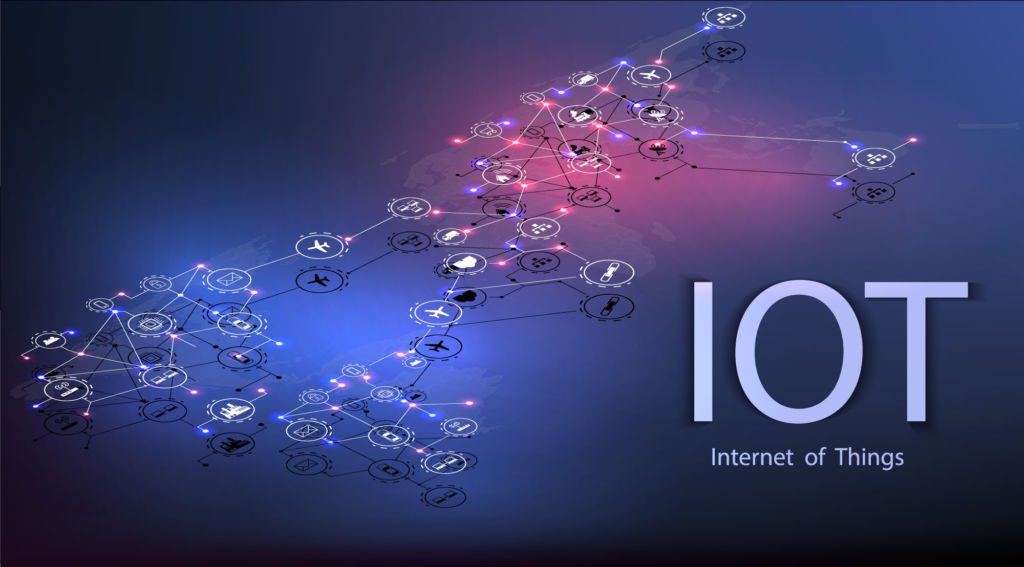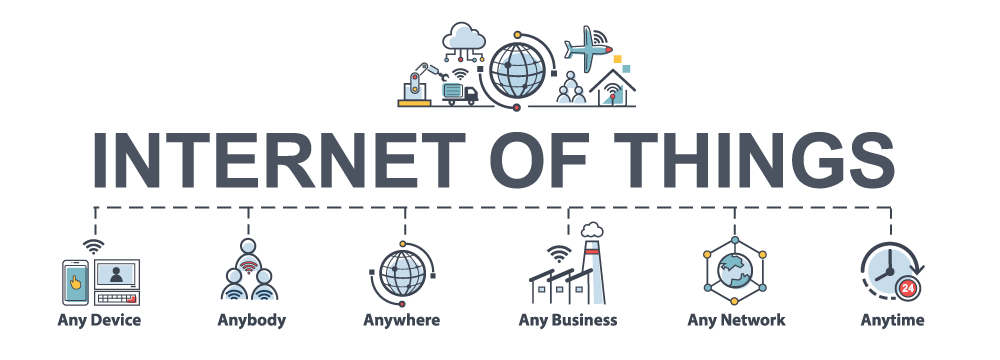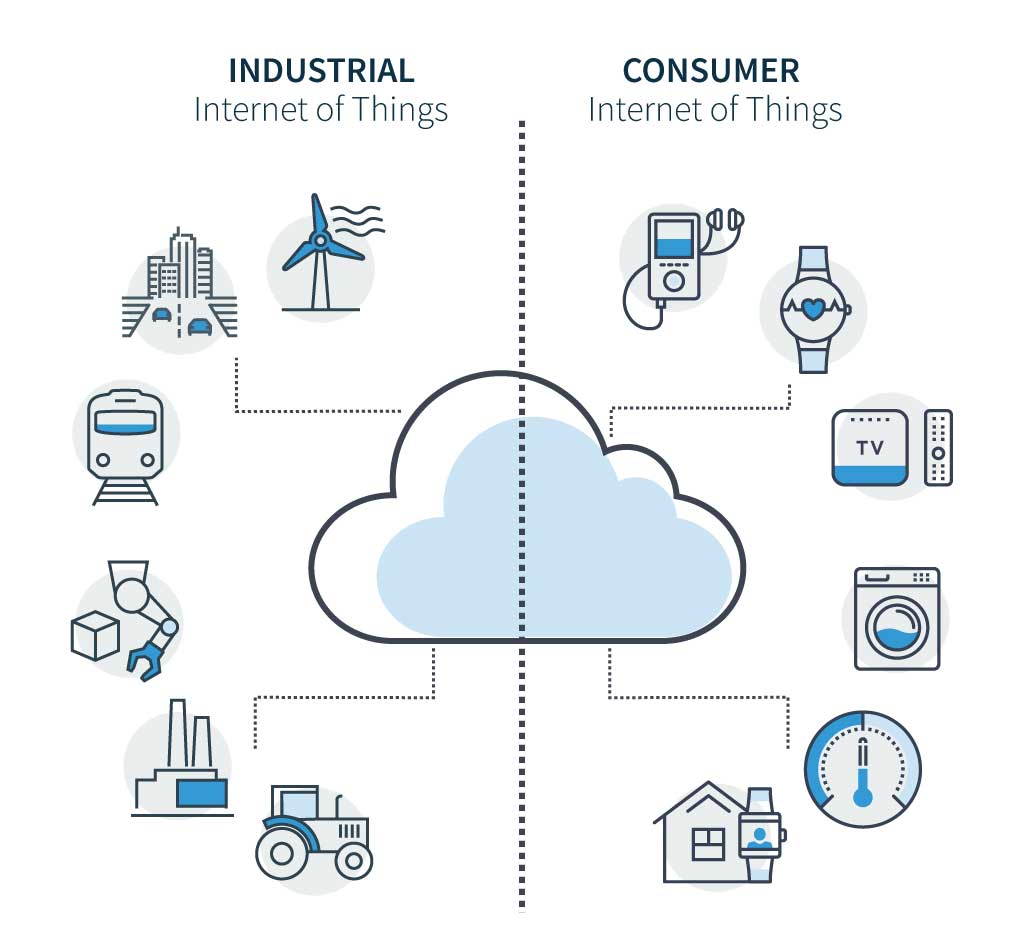
What is IoT in simple words?
According to Gartner,’’The Internet of Things (IoT) is a network of dedicated physical objects that contain embedded technology to communicate and sense or interact with their internal states or the external environment. The connecting of assets, processes and personnel enables the capture of data and events from which a company can learn behavior and usage, react with preventive action, or augment or transform business processes. The IoT is a foundational capability for the creation of a digital business.’’

The increasing number of applications can be found in many different areas including security, asset tracking, agriculture, smart metering, smart cities, and smart homes. It’s a fairly new concept and has been brought about due to our increasingly connected world.
So what exactly is the Internet of Things?
The concept essentially means connecting devices via internet connection.
What are examples of IoT devices? They’re everywhere you look.
They include everything from cellphones, coffee makers, washing machines, headphones, lamps, wearable devices and tons of other things that can be connected to the internet with a switch.
The concept is also applied through machine to machine communication. A few examples can be found in mining through sensors, underground construction, monitoring snow levels, smart metering, and so much more. According to Gartner, by 2020 there will be over 20 billion connected devices. Given the rise of connected devices that’s shortly on its way, it’s safe to say that the Internet of Things will impact our day to day lives. But how?
Below is a table explaining the differences between IoT and IIoT.

How will IoT impact our lives?
The short answer is this: we are constantly looking for ways to make our lives easier. There are tons of examples out there, but let’s say that your smart watch could be connected to your coffee maker and fridge. Depending on your health readings that morning, your smartwatch would be able to recommend what kinds of vitamins you should be consuming in that day. Running late to a meeting? No problem. The other parties are already aware because they have received a text saying that there was heavier traffic than usual.
The wireless possibilities are endless, it’s just a matter of time to see how quickly the needs of the market evolve.
What does IoT mean for businesses?
The IoT has evolved from just simple machine-to-machine (M2M) communication. What businesses and companies gain from using M2M communications is connecting a device to the cloud, managing it and collecting data.
The IoT is a sensor network of billions of smart devices that connect people, systems and other applications to collect and share data. As its foundation, M2M offers the connectivity that enables IoT. It’s used for process control, the ability to gather data in real time remotely in order to control machines.
IoT is something that companies are trying to figure out how to properly leverage, in order to improve business practices. Before implementing any IoT projects, it’s important to first map the business goals, objectives and what outcomes you would expect by implementing IoT. What added value will these practices add to the business?
According to a report from Forrester, there are 3 ways IoT can drive business value:
- Design: Transform new or existing products or environments
- Operate: Enhance physical processes with better information and digital automation
- Consume: Improve services, operations or products with third-party IoT customer and context data
According to Forrester’s report, there are a handful of strategies to help companies reach success. Here are a few of their suggestions:
- Develop IoT design strategies in addition to operations strategies.
- Plan beyond the initial optimization benefits of using IoT in operations.
- Start with customer experience, then work back into internal operations.
- Find “consume” IoT opportunities by learning where user journeys interact with IoT-enabled assets or environments
This structure definitely helps organize the range of possibilities of IoT. What’s important to figure out not only how IoT can be implemented for business practices, but what actual steps they can take to go forward to reach their goal.
Why is IoT important?
It’s important to understand that the Internet of Things has made a major impact on our daily lives, and of course, there are positive and negatives to this phenomenon.
Looking at it from a positive standpoint, IoT can help people live and work smarter as well as feel more in control over their lives. Smart devices can automate homes, can be used in business, in industrial applications, it can deliver insights into the performance of machines to supply chain and logistics operations, and more.
Potential issues with IoT
The reality is that the IoT has virtually endless opportunities, some that haven’t yet been thought of yet. It’s difficult to predict what kind of impact IoT will have in the future, but we can be certain that it’s not going anywhere. The downside to IoT is of course security issues. It’s no secret that with the ability to connect billions of devices, the potential to hack the system increases and therefore poses a risk to the entire network. That security issue makes a lot of people hesitant to adopt it, especially if that risk is brought into a smart home.
Takeaways
Whether you’re an avid smart watch user or interested in implementing IoT to improve business practices, what’s important is conducting the proper research beforehand. This is done by taking the right steps to make sure that the strategy used is in line with your goals, whether personal or business.
Great work thanks to you for sharing such useful information. keep it up all the best. I can also refer you to one of the best IoT Solutions in chennai.